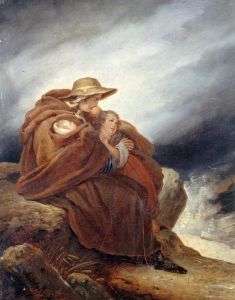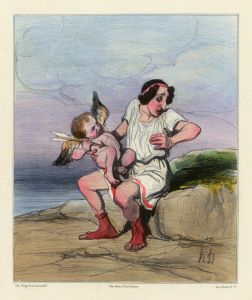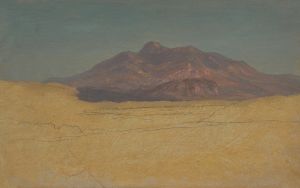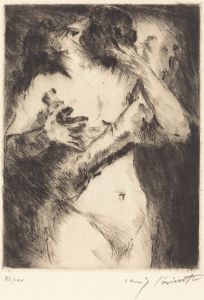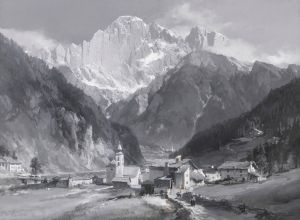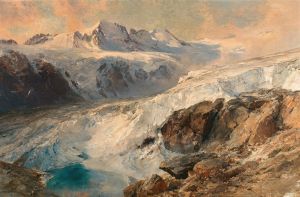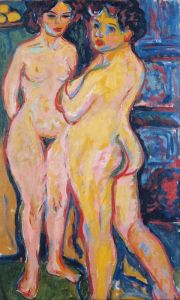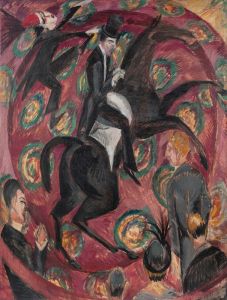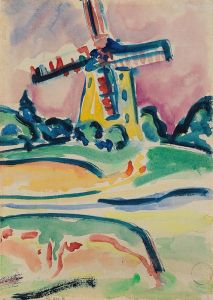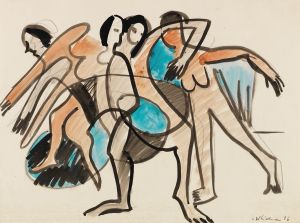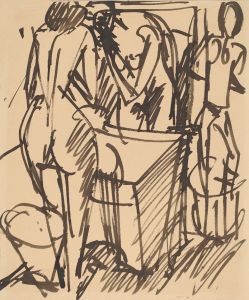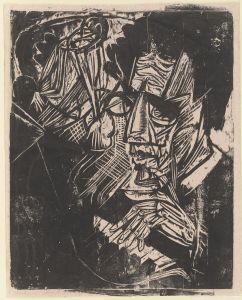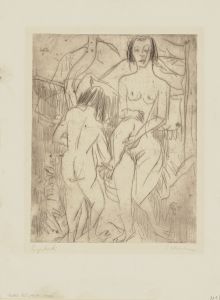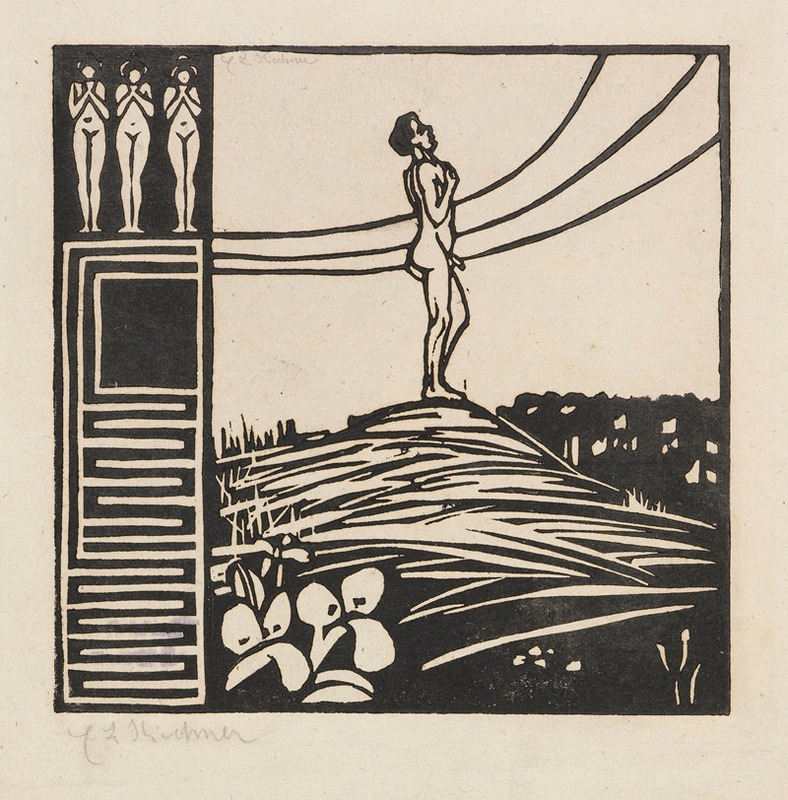
Männliche Figur auf einem Berg
A hand-painted replica of Ernst Ludwig Kirchner’s masterpiece Männliche Figur auf einem Berg, meticulously crafted by professional artists to capture the true essence of the original. Each piece is created with museum-quality canvas and rare mineral pigments, carefully painted by experienced artists with delicate brushstrokes and rich, layered colors to perfectly recreate the texture of the original artwork. Unlike machine-printed reproductions, this hand-painted version brings the painting to life, infused with the artist’s emotions and skill in every stroke. Whether for personal collection or home decoration, it instantly elevates the artistic atmosphere of any space.
Ernst Ludwig Kirchner was a prominent German expressionist painter and one of the founding members of the artist group Die Brücke (The Bridge), which played a pivotal role in the development of modern art in the early 20th century. His work is characterized by bold colors, dynamic compositions, and a focus on the human figure, often set against vibrant landscapes.
"Männliche Figur auf einem Berg" (Male Figure on a Mountain) is one of Kirchner's paintings that exemplifies his unique style and thematic interests. Although specific details about this particular painting are limited, it can be contextualized within Kirchner's broader body of work and his artistic philosophy.
Kirchner was deeply influenced by the landscapes and cultural environment of the places he lived and worked. After moving to Switzerland in 1917, he became increasingly inspired by the mountainous landscapes of the Swiss Alps. This change in environment is reflected in many of his works from this period, where he often depicted figures in harmony with nature, set against the dramatic backdrops of mountains and forests.
The painting "Männliche Figur auf einem Berg" likely reflects Kirchner's fascination with the relationship between humans and nature. His works from this period often explore themes of isolation, introspection, and the search for authenticity in a rapidly modernizing world. The male figure in the painting may symbolize a return to a more primal, unspoiled state of being, a common motif in Kirchner's exploration of the human condition.
Kirchner's style is marked by expressive brushwork and a vivid color palette, which he used to convey emotional intensity and psychological depth. His figures are often elongated and stylized, emphasizing movement and emotion over realistic representation. This approach aligns with the broader goals of the expressionist movement, which sought to capture the emotional experience rather than the physical reality.
Throughout his career, Kirchner faced numerous personal and professional challenges, including struggles with mental health and the impact of World War I. These experiences profoundly affected his work, imbuing it with a sense of urgency and existential inquiry. Despite these challenges, Kirchner remained a prolific artist until his death in 1938.
"Männliche Figur auf einem Berg" can be seen as part of Kirchner's ongoing exploration of identity, nature, and the human psyche. While specific information about the painting's creation and provenance may be limited, its thematic and stylistic elements are consistent with Kirchner's broader oeuvre and his contributions to the expressionist movement.
In summary, "Männliche Figur auf einem Berg" is a testament to Ernst Ludwig Kirchner's enduring legacy as a pioneer of expressionism, reflecting his deep engagement with the natural world and the complexities of human emotion. Through his innovative use of color and form, Kirchner continues to inspire and challenge viewers, inviting them to contemplate the profound connections between art, nature, and the self.





